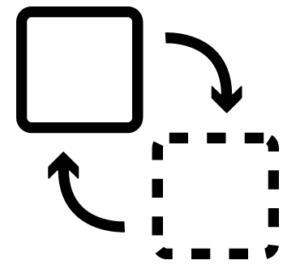 We’ve already defined an antecedent as the noun (or phrase) that a pronoun is replacing. The phrase “antecedent clarity” simply means that is should be clear who or what the pronoun is referring to. In other words, readers should be able to understand the sentence the first time they read it—not the third, forth, or tenth. In this page, we’ll look at some examples of common mistakes that can cause confusion, as well as ways to fix each sentence.
We’ve already defined an antecedent as the noun (or phrase) that a pronoun is replacing. The phrase “antecedent clarity” simply means that is should be clear who or what the pronoun is referring to. In other words, readers should be able to understand the sentence the first time they read it—not the third, forth, or tenth. In this page, we’ll look at some examples of common mistakes that can cause confusion, as well as ways to fix each sentence.
Let’s take a look at our first sentence:
Rafael told Matt to stop eating his cereal.
When you first read this sentence, is it clear if the cereal Rafael’s or Matt’s? Is it clear when you read the sentence again? Not really, no. Since both Rafael and Matt are singular, third person, and masculine, it’s impossible to tell whose cereal is being eaten (at least from this sentence).
How would you best revise this sentence? Type your ideas in the text frame below, and then look at the suggested revisions.
Were those revisions what you expected them to be?
Let’s take a look at another example:
Katerina was really excited to try French cuisine on her semester abroad in Europe. They make all sorts of delicious things.
When you read this example, is it apparent who the pronoun they is referring to? You may guess that they is referring to the French—which is probably correct. However, this is not actually stated, which means that there isn’t actually an antecedent. Since every pronoun needs an antecedent, the example needs to be revised to include one.
How would you best revise this sentence? Type your ideas in the text frame below, and then look at the suggested revisions.
As you write, keep these two things in mind:
- Make sure your pronouns always have an antecedent.
- Make sure that it is clear what their antecedents are.
Practice
Use the context clues to figure out which pronoun to use to complete the sentences. Select the response from the list that best completes the sentence.
- Pat is fifteen and Robin is thirteen. (Pat / he / she) likes swimming, but (Robin / he / she) doesn’t know what he likes.
- Because (Robin / he) can swim now, (Robin / he) can join the swim team.
Let’s try a more complicated paragraph:
- When my identical twin girls, Andrea and Renee, were about a month old, (she / Renee) developed a very high temperature, so I took her to the hospital where (she / Renee) spent the night. Meanwhile, at home, (she / Andrea) was twisting and turning; (she / Andrea) was unable to sleep. The next night, (she / Andrea) was the same.